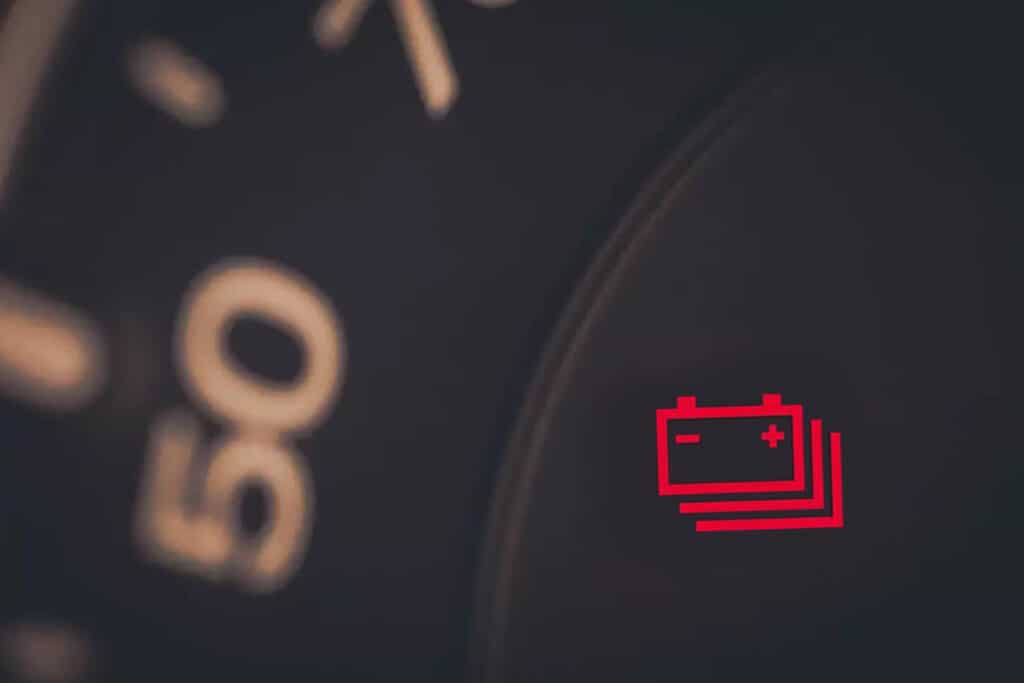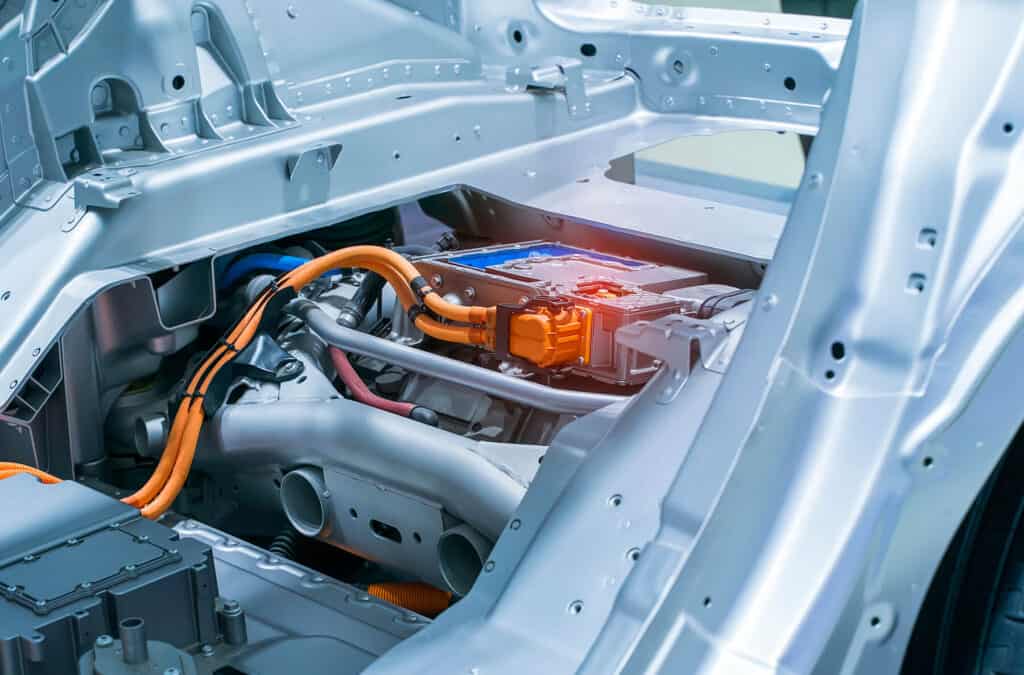Introduction: Electrifying Journeys: Navigating the Intricacies of High Voltage Battery Indicators
Strap in as we embark on a road trip through your vehicle’s electrical maze to decode the language of high voltage battery indicators. These dashboard icons are the unsung heroes of your car’s electrical system, and we’re here to elevate them to center stage.
Indicator Basics: What Is a Battery Charge Indicator and What Does It Signify?
Imagine your car could talk. It would share its mood swings, its highs and lows, all through this dashboard marvel we call the battery charge indicator. This nifty device is the health meter for your car’s electrical lifeblood — its battery. Now, this isn’t some flashy doodad without purpose; think of it as your battery’s personal PR rep. It informs you, in real-time, if the battery is in high spirits (fully charged), feeling under the weather (low charge), or in a risky state of hyperactivity (overcharged).
If the indicator stays a soothing green, your car’s battery is essentially saying, “All systems go!” However, a shift to red or amber is akin to your car muttering, “Hey, we need to talk.” Simply put, this indicator functions as your personal notification system. It does more than just add some razzle-dazzle to your dashboard; it opens a dialogue between you and your vehicle. When the indicator changes in any form, it’s your car imploring you to either keep up the good work or attend to an issue before it balloons into a costly problem.

The Power of Excess: Risks and Repercussions of Overcharged Batteries
If moderation is the key to life, then let’s consider it doubly important when we talk about your car’s battery. Overcharging a car battery is a bit like forcing a high-octane espresso down a toddler — it’s a recipe for chaos. So, what’s the real-world impact of an overcharged battery? Initially, it’s a one-way ticket to cutting the life of your battery short. Think of it like running a marathon without training; your battery gets worn out much quicker than it should.
But let’s turn up the heat on the worst-case scenarios. We’re talking potential overheating, swelling, and — hold your horses — even a dramatic battery explosion. Imagine your car transforming into a mini-volcano, spewing hazardous chemicals. Sounds like a sci-fi movie plot, but it’s a grim reality you may face with an overcharged battery.
As if dealing with a volcanic battery isn’t worrying enough, an overcharged battery can throw a wrench into your car’s electrical ecosystem. Components like your vehicle’s alternator, computer systems, and lighting may all suffer from an overpowered battery. It’s like inviting a bull into a china shop—something’s going to get damaged. When your battery’s voltage goes rogue, it’s not just the battery that feels the heat; your entire car’s electrical architecture is put at risk.
Reading the Meter: How the High Voltage Battery Gauge Displays State of Charge
When it comes to how the high voltage battery gauge displays the battery state of charge, it usually features a range of color-coded or numerical indicators:
• Visual Indicators: Most high voltage battery gauges use visual cues to display the state of charge. This often means color-coded displays where green or blue usually indicates everything is hunky-dory.
• Warning Colors: On the flip side, if your gauge is flashing red or amber, that’s your car’s way of screaming for help. It indicates that your battery needs immediate attention, possibly due to a low or critically high charge level.
• Numerical Displays: Some modern vehicles opt for numerical displays, giving you a more precise understanding of your battery’s state of charge. These numbers are generally the voltage reading and can offer a more exact diagnosis.
• Variable States: In some cases, the gauge may also show a ‘medium’ state, often in yellow or orange. This isn’t a crisis mode but does suggest that you should monitor the situation and possibly schedule a check-up.
Dialing In: Understanding Why Your Voltage Gauge Reads High
A voltage gauge reading high can be due to several reasons:
• Alternator Issues: One common culprit behind a high voltage reading is a malfunctioning alternator. The alternator is responsible for supplying power to the car and charging the battery, so any issue here can throw your voltage out of whack.
• Faulty Voltage Regulator: If your car’s voltage regulator is on the fritz, you’re likely to see higher than normal voltage readings. This piece of equipment is supposed to maintain a constant voltage level, and if it fails, the voltage can skyrocket.
• Potential Damage: High voltage isn’t just numbers on a screen; it can lead to tangible issues like damaging your vehicle’s electrical system. Accelerated wear and tear on the electrical components can result from these elevated voltage levels.
• Immediate Action: A high reading on your voltage gauge isn’t something to put on your ‘later’ list. Ignoring it can lead to a domino effect of electrical malfunctions, each more expensive to fix than the last.
The Indicator’s Language: How to Read a Battery Charge Indicator Efficiently
Imagine you’re a tourist in a foreign country. Everything is fascinating, but the signs and symbols look like hieroglyphics to you. Not understanding the language could lead you into some troublesome situations, right? It’s much the same with your car’s battery charge indicator. Understanding this “language” of lights and numbers can mean the difference between a routine drive and a roadside disaster.
First off, let’s decode the ‘steady light’ status. If your battery charge indicator maintains a consistent light, usually green or blue, consider it the automotive equivalent of a thumbs-up emoji. It’s your vehicle’s way of saying, “We’re good to go; the battery is in optimal condition.” A steady light is a sign of a happy and well-fed battery, living its best life.
Now, what if the indicator starts flashing or switches to a different color like red or amber? Think of this as your car’s SOS signal. A flashing light generally signifies that there’s something off-kilter in the battery or the charging system. It could mean your battery is on the verge of being overcharged, undercharged, or could be experiencing other complications that require immediate attention.
Different colors also serve as the car’s way of speaking in exclamation points. A green light means all is well, but red or amber says, “Caution! Investigate!” It’s like your car’s way of nudging you and saying, “Hey, if you ignore me now, you’ll regret it later.” These colors aren’t for decoration; they’re a part of a coded language designed to communicate the state of your battery as clearly as possible.
Also, some modern cars come equipped with more elaborate battery indicators that display not just colors but also numbers. These numerical indicators offer a more detailed picture, allowing you to gauge the exact state of charge in terms of voltage. For those who love precision, this is your battery’s biography in digits, giving you all you need to know about its current state.

The Right Voltage: Recognizing a Fully Charged Battery
The ideal voltage for a fully charged car battery is generally between 12.6 and 12.8 volts. This isn’t just a number; it’s a wellness check, the battery’s way of saying, “All systems go!” Keeping an eye on these numbers can save you the hassle of being stranded with a dead battery. It’s also a good practice to check your battery voltage occasionally, even if there are no obvious issues. Doing so ensures that you catch potential problems before they become expensive roadblocks. If you don’t own a multimeter to check the voltage yourself, many automotive stores and mobile mechanic services can check it for you.
You might wonder if a battery displaying higher than 12.8 volts is better. Not necessarily. Overcharging a battery can lead to a decrease in its lifespan and even hazardous situations, such as leaks or explosions. Therefore, understanding the “Goldilocks Zone” of 12.6-12.8 volts ensures you’re neither overcharging your battery nor letting it languish in a state of low charge, both of which can lead to long-term issues.
Cost and Repairs: The Economic Landscape of High Voltage Battery Indicators
Let’s face it: Life comes with its costs, and car ownership is no different. Understanding potential repairs related to high voltage battery indicators can turn you from a passive vehicle owner into an empowered one. So, what’s the damage going to be? Costs can vary, but generally, you can expect to shell out between $100 and $400 for most repairs associated with high voltage indicators. These costs hinge on several factors like the kind of issue you’re dealing with and the labor costs in your area.
Common fixes might involve replacing the voltage regulator or alternator, both of which can fall within that price range. For battery replacement, you’re generally looking at the lower end of that spectrum. Now, if you’re thinking, “Why not just ignore it?”—well, keep in mind that overlooking a high voltage issue can lead to a cascade of electrical problems down the line, culminating in a substantially larger repair bill. So, it’s generally better to bite the bullet and take care of it sooner rather than later.
Conclusion: The Final Volt: Mastering the High Voltage Battery Indicator Game
By now, you should be a maestro of high voltage battery indicators, capable of decoding their nuanced language with the finesse of a seasoned mechanic. Still puzzled by a stubborn indicator? There’s a Canadian solution for that—Uchaincs. We’re the ultimate choice for all your high voltage battery-related concerns. From diagnosis to repairs, we’ve got your back. So, what’s in it for you? Professional service, fair pricing, and peace of mind. Ready to electrify your driving experience? Book an appointment with Uchaincs today.
